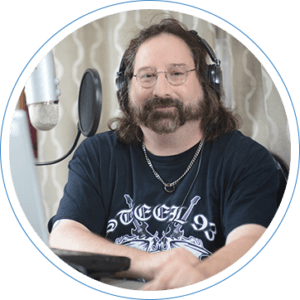Acoustic Neuroma Symptoms and Treatment
Table of Contents
About Acoustic Neuroma: What is it?
An acoustic neuroma (also called a vestibular schwannoma) is a benign, slow-growing tumor that grows off the eighth cranial nerve, called the vestibulocochlear nerve. The eighth cranial nerves (one on the right and one on the left) are your hearing and balance nerves, which often explains the symptoms people develop as these tumors grow. Acoustic neuromas are noncancerous tumors so they do not spread or metastasize to other parts of the body.
Because acoustic neuromas can grow slowly, they can stretch or press on any structures in their neighborhood including the balance nerves, hearing nerve and the nerve that moves the muscles of the face (the facial nerve). If an acoustic neuroma grows beyond an inch, it can push on the brainstem. The trigeminal nerve (responsible for feeling the face) and other cranial nerves can then cause symptoms.
In addition, because these tumors are located along the nerves that travel from the ear to the brain, they tend to be found in the inner ear canal, they can damage the function of the middle and inner ear.
Acoustic Neuroma Development
Acoustic neuromas arise from special cells called Schwann cells, which surround and insulate the vestibulocochlear nerve. They typically grow slowly and do not spread to other body areas, but they can lead to acoustic neuroma symptoms by pressing on the nerves or surrounding tissues in the area.
Most of the time, patients complain of hearing loss that affects only one ear. People often don’t even notice an issue for years due to the slow-growing nature of these tumors. Due to the hearing issues, many patients will seek out the help of a hearing specialist such as an ENT doctor first. Less commonly, people will complain of balance problems that also develop very slowly, if at all. Because acoustic neuromas grow slowly, doctors typically diagnose them in patients between 30 and 60 years old. Unless the tumor is quite large, it’s seldom life-threatening.
Most patients will only have one nerve affected (the cranial nerves are paired, one on each side of the body), but some patients with a rare condition called Neurofibromatosis Type 2 may have tumors on both sides, which affects both ears. The cause of most acoustic neuroma cases is unknown but could be related to an issue with a gene on chromosome 22.
Acoustic Neuroma Symptoms and Diagnosis
Acoustic neuroma symptoms are almost always related to hearing loss on the same side as the tumor. Remember, the symptoms can be mild, so many patients ignore them until they become obvious. Balance issues, ringing in the ear, and other symptoms related to larger tumors can also occur. Below is a short list of possible symptoms from a growing acoustic neuroma:
- Hearing loss and/or ringing one ear
- Vertigo
- Balance issues and difficulty walking
- Facial numbness and weakness
- Hydrocephalus (a buildup of fluid in the brain)
Depending on a patient’s symptoms, to confirm the diagnosis of an acoustic neuroma, a doctor will often examine the patient’s ear and perform a hearing test. If these examinations demonstrate loss of hearing on one side, most doctors will order either a CT scan or a magnetic resonance scan (MRI) of the brain, with contrast, to see if there is anything visible around the hearing nerve.
Acoustic Neuroma Treatment
Acoustic neuroma treatments are almost always elective. That means patients and their loved-ones usually have time to educate themselves and obtain second opinions before deciding to have treatment. For patients to “get smart” on their options, they need to understand what is available.
In creating the best treatment plan for a patient, an experienced brain surgeon will review all of the tests and images before making any recommendation. Here are the main things an expert team will consider while making recommendations for a patient:
- Patient age, current medications, overall health and life goals/desires
- Hearing test results
- High-resolution MRI pictures (size of the tumor, compression of other structures, grow patterns vs no growth over time.
- Symptoms and symptom progression
You and your doctor will discuss potential management options after walking through the key things above Acoustic neuroma treatment options include:
- Gamma Knife Treatment (aka Stereotactic Radiosurgery): With Gamma Knife, 192 small beams of radiation are safely, painlessly and accurately guided to treat the tumor. Technology like the Leksell Gamma Knife®Icon can be very effective acoustic neuroma treatments in outpatient settings. No hospital stay. No incisions. No ventilator. In general, Gamma Knife is an excellent option for tumors less than 2.5 cm in maximal dimension and not causing significant pressure on the brainstem. It is a game changer for many patients who wish to resume normal life following an acoustic neuroma diagnosis.
- Traditional Acoustic Neuroma Surgery: Traditional surgery is an excellent treatment option when reducing the size of the acoustic neuroma is absolutely necessary. For younger patients with larger tumors, traditional surgery may be the preferred option. Gamma Knife treatment can treat the remaining fragments in cases where a small amount of tumor needs to be left behind.
- Conservative “watchful waiting” approach: It’s very important to mention that not every patient will require acoustic neuroma treatment (for example, those who have small, asymptomatic tumors). Doctors will instead monitor these patients for tumor growth on a structured follow-up schedule. If, over time, a smaller acoustic neuroma grows, then Gamma Knife is a great option at some point “down the road.”
Authors:

William Cobb, MD, PhD, FAANS
Dr. William Cobb is a board-certified neurosurgeon that specializes in Neurosurgery, Neuro-Oncology, brain and spine tumor treatment, as well as Gamma Knife Radiosurgery. He is the Director of Neurosurgical Oncology at The Valley Hospital. Dr. Cobb is experienced in treating patients with many types of brain tumors, as well as trigeminal neuralgia and brain metasteses.

Anthony D'Ambrosio, MD, MBA, FAANS
Dr. Anthony D’Ambrosio is a board-certified neurosurgeon that specializes in Neurosurgery, Stereotactic Radiosurgery, Gamma Knife Radiosurgery (GKRS) and more. He is the Director of Neurosurgery and Co-Director of the Gamma Knife Program at The Valley Hospital. Dr. D’Ambrosio is an expert in treating patients with trigeminal neuralgia, benign or malignant brain tumors, as well as many other neurological conditions.

Rupa G. Juthani, MD
Dr. Rupa Juthani is a board-certified neurosurgeon that specializes in endoscopic pituitary and skull base surgery, brain tumor treatment, trigeminal neuralgia, Gamma Knife Radiosurgery, and more. She is the Sub-Specialty Medical Director of Endoscopic Skull Based Surgery at The Valley Hospital. Dr. Juthani is experienced in treating patients with various brain tumors, trigeminal neuralgia, acoustic neuroma, and more.
Get Your Questions Answered, By a Real Person.
Our Patient Liaisons are here to help you understand your next step. After discussing your specific case, they can help you navigate your medical records, answer insurance questions, and connect you with one of our nurses, at no charge to you.
For your convenience and safety, we offer both virtual and in-person consultations. Reach out today (201) 634-5610.


